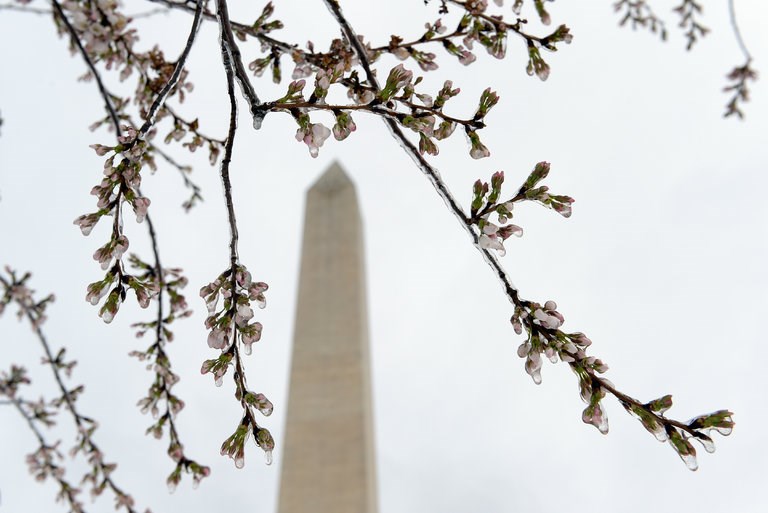
A balmy February lured the blooms from their buds earlier than usual, and a sudden cold snap is threatening to kill most of them off for the year, officials here say.
“We had this real mild winter to bring the blossoms out early,” Mike Litterst, a spokesman with the National Park Service, said in an interview. “Then when they were at their most vulnerable, here comes Old Man Winter to crash the party.”
Tuesday was supposed to be the beginning of the peak blooming period for the cherry blossoms in Washington. Instead, the capital was covered in snow and sleet as a nor’easter moved up the East Coast.

The winter storm is to be followed by cold weather the next three nights, with temperatures expected to dip below 24 degrees Fahrenheit. The cold could kill off 90 percent of the tender blossoms, Mr. Litterst said.
Over the past few days, officials have been watching the blossoms and the forecast closely, sharing updates on Twitter. On Tuesday, other observers began sharing photos of the blossoms encased in ice.
The trees, some of which were first delivered to the capital in 1912, are the centerpiece of a weekslong festival in the capital that was projected to attract over a million tourists from around the world this year. The festival has been in danger before: a government shutdown threatened to cancel its parade in 2011.
But this is the first time that officials at the National Park Service have grappled with such a weather whiplash. The initial projected bloom date, March 14, would have been the earliest on record. But now the blooms face missing their new bloom date — delayed to March 19 — for the first time since officials started keeping those records in 1921.

“We’re in unprecedented territory,” Mr. Litterst said. “The next 48 hours are going to be crucial.”
He would not address whether climate change had influenced this year’s problems, but he noted that average temperatures have been rising in Washington overall, and the average peak bloom date, April 4, is five days earlier than it was when the trees were first planted.
“The earlier cherry blossom blooming is consistent with the rising temperatures in the city,” he said.
According to nytimes.com








